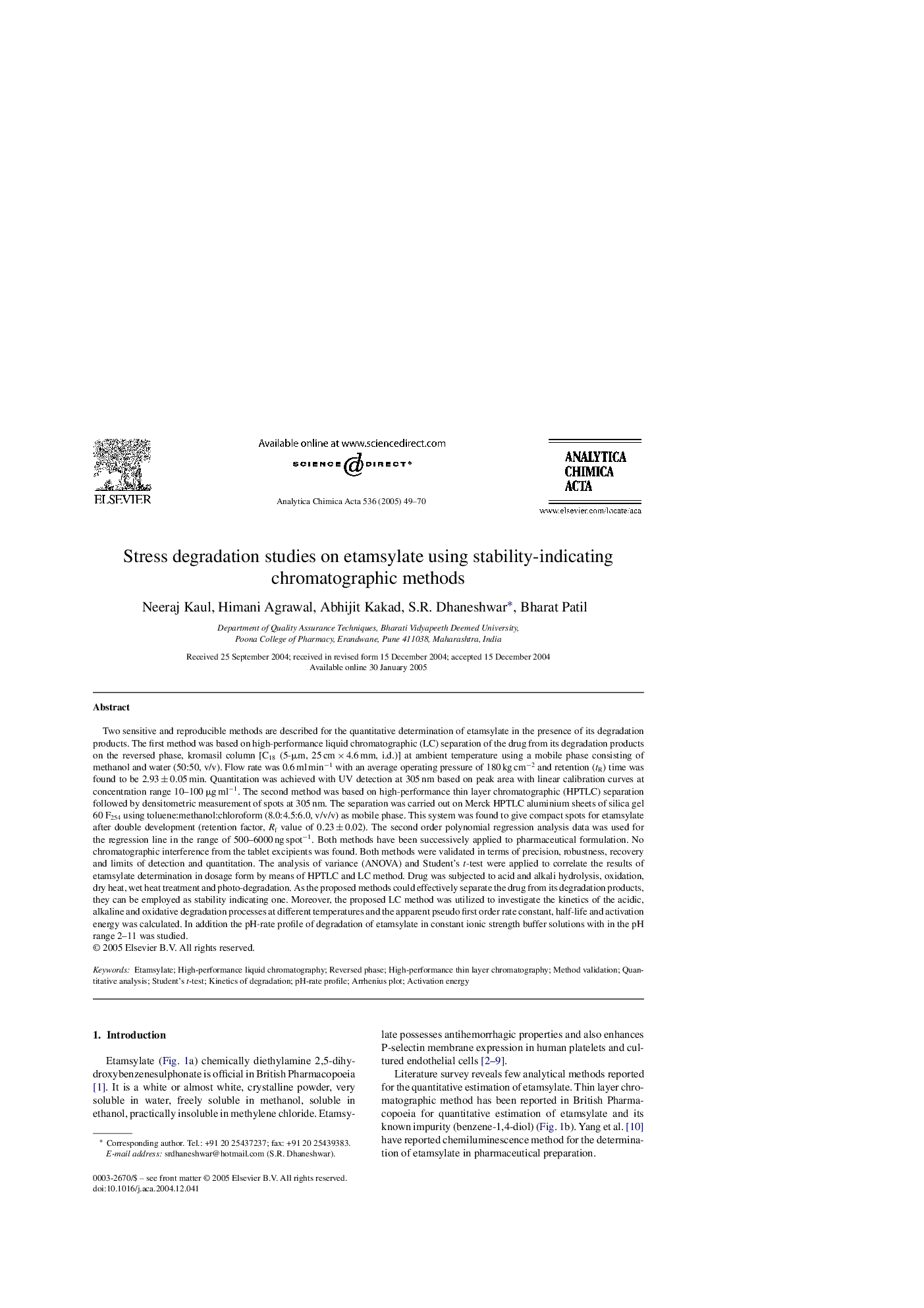| Article ID | Journal | Published Year | Pages | File Type |
|---|---|---|---|---|
| 9743823 | Analytica Chimica Acta | 2005 | 22 Pages |
Abstract
Two sensitive and reproducible methods are described for the quantitative determination of etamsylate in the presence of its degradation products. The first method was based on high-performance liquid chromatographic (LC) separation of the drug from its degradation products on the reversed phase, kromasil column [C18 (5-μm, 25 cm Ã 4.6 mm, i.d.)] at ambient temperature using a mobile phase consisting of methanol and water (50:50, v/v). Flow rate was 0.6 ml minâ1 with an average operating pressure of 180 kg cmâ2 and retention (tR) time was found to be 2.93 ± 0.05 min. Quantitation was achieved with UV detection at 305 nm based on peak area with linear calibration curves at concentration range 10-100 μg mlâ1. The second method was based on high-performance thin layer chromatographic (HPTLC) separation followed by densitometric measurement of spots at 305 nm. The separation was carried out on Merck HPTLC aluminium sheets of silica gel 60 F254 using toluene:methanol:chloroform (8.0:4.5:6.0, v/v/v) as mobile phase. This system was found to give compact spots for etamsylate after double development (retention factor, Rf value of 0.23 ± 0.02). The second order polynomial regression analysis data was used for the regression line in the range of 500-6000 ng spotâ1. Both methods have been successively applied to pharmaceutical formulation. No chromatographic interference from the tablet excipients was found. Both methods were validated in terms of precision, robustness, recovery and limits of detection and quantitation. The analysis of variance (ANOVA) and Student's t-test were applied to correlate the results of etamsylate determination in dosage form by means of HPTLC and LC method. Drug was subjected to acid and alkali hydrolysis, oxidation, dry heat, wet heat treatment and photo-degradation. As the proposed methods could effectively separate the drug from its degradation products, they can be employed as stability indicating one. Moreover, the proposed LC method was utilized to investigate the kinetics of the acidic, alkaline and oxidative degradation processes at different temperatures and the apparent pseudo first order rate constant, half-life and activation energy was calculated. In addition the pH-rate profile of degradation of etamsylate in constant ionic strength buffer solutions with in the pH range 2-11 was studied.
Keywords
Related Topics
Physical Sciences and Engineering
Chemistry
Analytical Chemistry
Authors
Neeraj Kaul, Himani Agrawal, Abhijit Kakad, S.R. Dhaneshwar, Bharat Patil,
